Cars are one of our most-valued investments. Purchasing a car is no small matter, but ownership goes far beyond just paying the sticker price, with other costs such as fuel, maintenance, registration, insurance, and most of all, security.
In 2017, the PNP Highway Patrol Group (HPG) recorded over 5,363 carjacking incidents, 424 of which involved four-wheeled vehicles. This emphasizes the importance of investing in a good anti-theft device for your vehicle.
It’s a good thing that there are plenty of anti-theft devices available in the market, to protect your vehicle from car thieves; the only thing you need to figure out is which of these products will work best for your vehicle. Philkotse.com will help you determine the best anti-theft devices for your car.
The 5 Best Car Anti-Theft Devices
I. Mechanical immobilizer
Mechanical immobilizers are the least expensive among the anti-theft features for cars; they are designed to restrict the access to the car, as well as limiting the likelihood of it being moved without the owner’s permission.
Their biggest advantage is their highly visual appearance, which serves as a deterrent against amateur car thieves (professional car thieves, however, wouldn’t be fazed by this).
Authorities recommend that mechanical immobilizers be used in conjunction with other types of anti-theft devices.
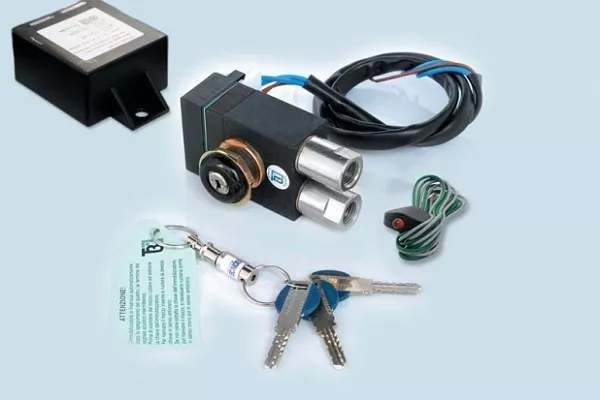
1. Steering wheel lock
This is literally a lock for the steering wheel, taking the shape of a metal bar. This is placed on the steering wheel and locked in place, rendering it immovable. Thieves will not be able to drive the car unless the lock is removed.
The most popular version of the steering wheel lock is referred to as “The Club”, a device placed between the steering wheel’s rims.
A steering wheel lock can be extended to accommodate a variety of wheel sizes, with the handles locking into place around the rim of the steering wheel. The device’s length keeps the steering wheel from being moved and turned.
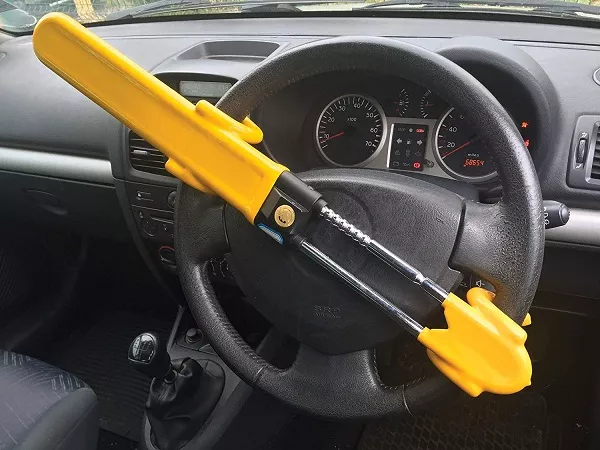
The steering wheel lock is literally a lock in the steering wheel
2. Hood lock
This lock is designed to bar unauthorized access to the engine under the hood. It prevents thieves from stealing the engine parts, especially the battery. Hood locks are similar to hood pins often found in muscle cars, with the main difference being that hood locks require a key to be opened.
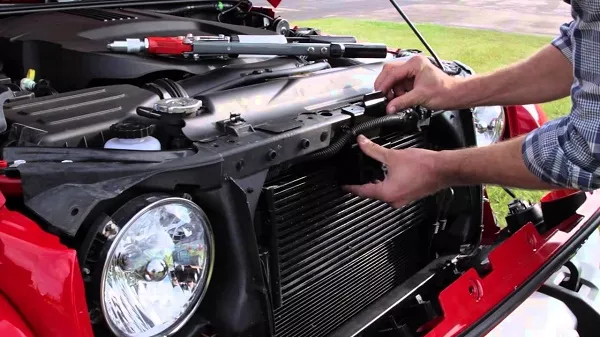
This lock aims to prevent the engine under the hood
3. Tire lock
This device locks the tires, also preventing the vehicle from being driven or moved. Before the car can be driven, the tire locks have to be removed. Originally, tire locks were used by traffic enforcers and police officers to immobilize the cars owned by drivers who failed to pay their parking tickets.
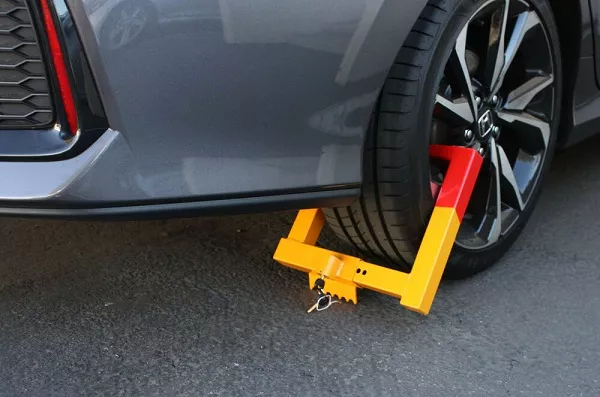
Tire lock prevents the vehicle from being driven or moved
Other mechanical immobilizers are gearshift lock, crook locks, and brake pedal locks. Modern cars now come standard with built-in vehicle immobilizers that disable the steering and ignition
II. Electronic immobilizer
Many newer cars already come with car keys and fobs that protect the vehicle through electronic immobilizers. Electronic immobilizers are built-in transmitters that send a signal to the car's anti-theft system; if the system confirms that the key fob and the car match, it enables the fob to unlock and start the vehicle.
However, if there are unauthorized parties who will try to access your vehicle without these signals, the vehicle will not start. Often car thieves will pass on vehicles that have electronic immobilizers since they require more sophisticated methods to defeat.
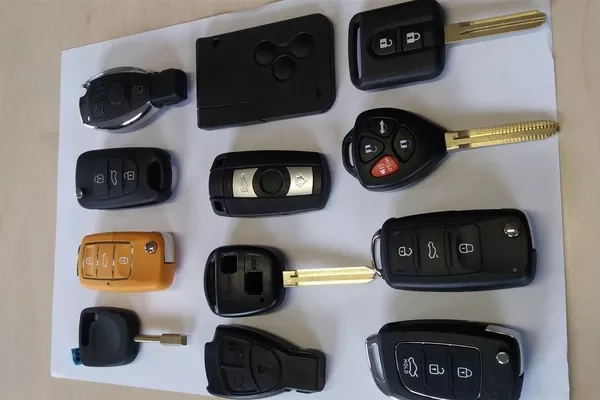
Electronic immobilizers have radio transmitters inside
1. Kill switch
This anti-theft device can be installed in the car. When activated, the kill switch shuts down the electrical system of the engine after a delay, ensuring that car thieves won’t get very far.
If your car doesn’t have a kill switch, you can have it installed by a mechanic or electrician. Just remember to check the warranty limitations of your vehicle, as carmakers generally don’t allow anything that involves tampering with the car’s electrical system.
Another thing to keep in mind when installing a kill switch is to make sure it’s hidden in a secure location so that thieves won’t be able to disable it.
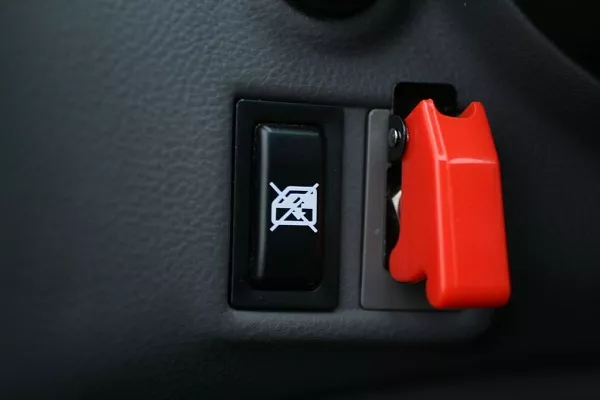
Kill switch shuts down the electrical system of the engine after a delay
2. Car alarm
Among other anti-theft devices, the car alarm is the most common. It involves an audible and visual warning (via sirens, horn, and lights) that is triggered when there is an attempt to break into the vehicle.
The electronic sensors send feedback to the alarm system when they detect unusual activity such as breaking glass and sudden movement on the car, activating a loud sound which will catch the attention of people in the immediate vicinity.
When car thieves notice that a vehicle is equipped with a car alarm, it usually deters them. Stickers on both sides of your vehicle proclaiming the presence of an alarm system can help as visual deterrents.

Among all the other anti-theft devices, the car alarm is the most visually effective
3. Car tracking system
This kind of anti-theft system can be quite expensive compared to others. An electronic tracking device on the car provides real-time location information to a receiver, such as a computer or mobile phone, using the Global Positioning System or GPS.
Although pricey, these devices have a very good record in locating stolen cars, usually as fast as an hour after the theft. Two of the biggest companies that provide car tracking systems are American firms OnStar and LoJack.
![]()
The LoJack tracking system features a hidden transmitter in the vehicle, activated when the car is reported to be stolen. The company boasts of a 90% return rate on stolen cars. OnStar provides a similar tracking system, and this comes standard on new models from Acura, Isuzu, Volkswagen, Audi, and GM.
>>> You might like to read: All about GPS Tracking Technology for cars and its benefits
4. VIN etching
All cars have a unique serial number composed of 17 digits that are assigned to each vehicle. This is referred to as the Vehicle Identification Number or VIN. The VIN is etched on the underside of the vehicle, as well as on the car’s ownership documents, registration card, and insurance policy.
You can have the VIN etched on the more visible portions of your car, such as the windows and side mirrors.
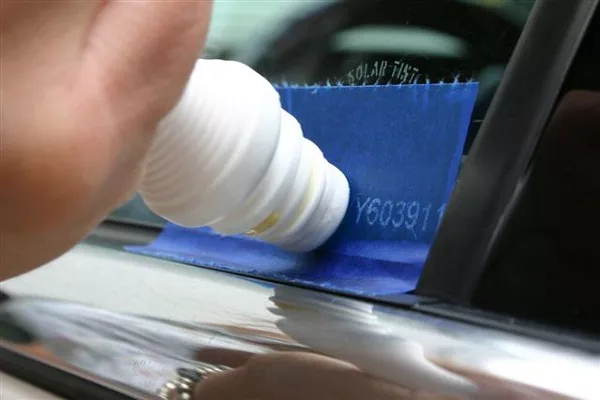
All cars have a unique serial number composed of 17 digits that are assigned to each vehicle called VIN
Recent posts
- How theft can hack your keyless car & 7 ways to prevent it Nov 08, 2022
- 4 common insurances against theft: Protection for the inevitable Mar 09, 2019
- 6 steps to disable your car's anti-theft alarming system Aug 04, 2020
- 3 most stolen cars in the Philippines Mar 25, 2021











